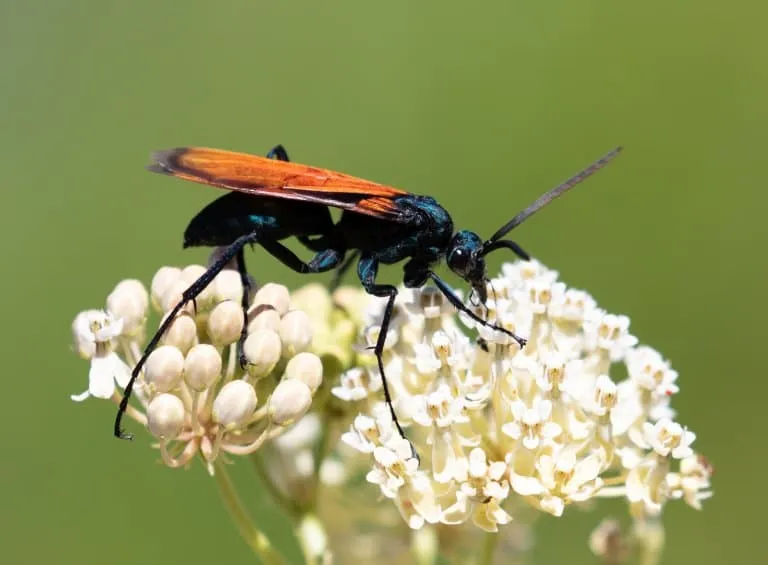Cicada Killer vs Tarantula Hawk Top 5 Facts
The insect world is full of fascinating creatures, and among the most intriguing are the Cicada Killer and the Tarantula Hawk. Both are large, solitary wasps with formidable reputations, but they have distinct characteristics, behaviors, and ecological roles. This article explores five key facts that highlight the differences and similarities between these remarkable insects, helping you better understand and appreciate these often-misunderstood creatures. From their physical appearances and preferred habitats to their unique behaviors and the impact they have on their environment, we’ll delve into what sets these two stinging insects apart. Get ready to learn some amazing facts about the Cicada Killer and Tarantula Hawk!
Fact 1 Appearance Differences
While both Cicada Killers and Tarantula Hawks are imposing wasps, their appearances offer clues to their identities. Paying attention to size, color, and other physical features can help you quickly distinguish between them. Understanding these visual cues is the first step in appreciating the unique characteristics of each species.
Cicada Killer Physical Features
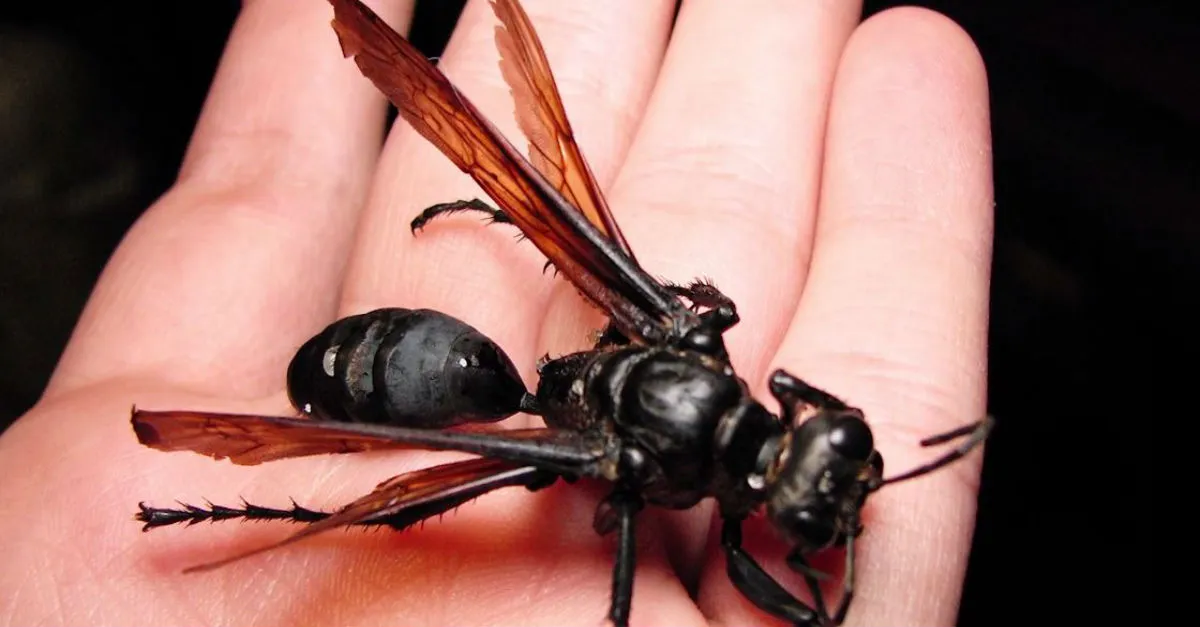
Cicada Killers (Sphecius speciosus) are typically larger, often reaching up to 2 inches in length. Their coloration is primarily black or dark brown with yellow markings on their abdomen. They have a robust build, with powerful legs used for digging and carrying their prey. The Cicada Killer’s wings are a dark, smoky color. When observing a Cicada Killer, you’ll notice its intimidating size and striking color pattern, which serves as a warning to potential predators. These physical adaptations are essential for their predatory lifestyle and nesting behaviors.
Tarantula Hawk Physical Features
Tarantula Hawks (Pepsis grossa) are slightly smaller than Cicada Killers, although they can still be quite large, about 1 to 2 inches long. They have a striking appearance with a black or dark blue body and vibrant, rust-colored wings. Their legs are long and spiny, adapted for climbing and grasping. The Tarantula Hawk’s antennae are also longer and more pronounced than those of the Cicada Killer. This dramatic coloration is aposematic, meaning it warns potential predators of their potent sting. The contrast between their dark bodies and bright wings makes them easily recognizable, even from a distance.
Fact 2: Habitat and Geographic Range
The habitats of the Cicada Killer and Tarantula Hawk give insights into their respective ecological roles. Their choice of location influences their behaviors, prey availability, and nesting strategies. Knowing where to find these insects helps you understand their distribution and interaction with the environment.
Cicada Killer Habitats
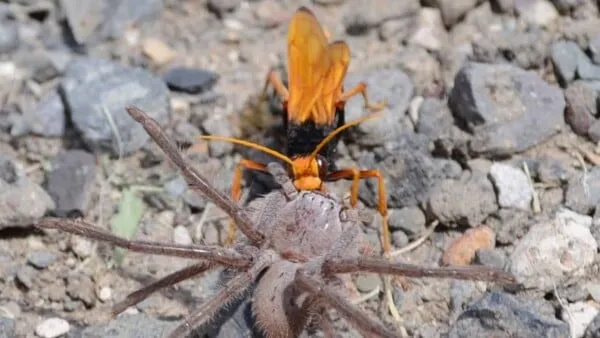
Cicada Killers are commonly found in areas with sandy or loamy soil, as they need this type of soil for digging their burrows. They are frequently observed in yards, parks, and gardens, particularly where cicadas are abundant. Their range spans across most of North America, including the United States and parts of Canada and Mexico. These insects prefer sunny locations where they can easily access cicadas, their primary food source for their larvae. They create individual burrows where they store cicadas to feed their young, often near trees where cicadas are plentiful.
Tarantula Hawk Habitats
Tarantula Hawks prefer warmer, drier climates and are often found in the southwestern United States and parts of South America. They are most commonly seen in desert areas, scrublands, and other open, sunny locations. The Tarantula Hawk hunts tarantulas, which are abundant in these regions. They build nests in existing cavities or crevices, rather than digging their own burrows. Their habitat preferences reflect their specialized hunting behavior and need for specific prey. These areas provide the ideal conditions for both the Tarantula Hawk and the tarantulas they prey upon.
Fact 3: Behavior and Diet
The behavioral and dietary habits of Cicada Killers and Tarantula Hawks are distinct. The specific prey and hunting methods highlight their adaptations to their respective environments. Understanding their behavior gives context to their role in the ecosystem.
Cicada Killer Behavior
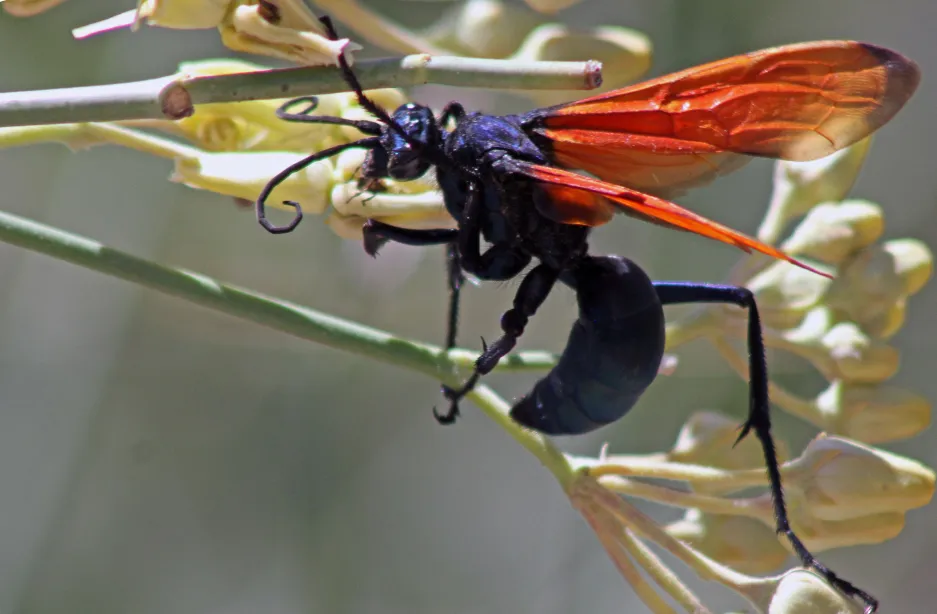
Cicada Killers are solitary wasps known for their meticulous hunting of cicadas. The female Cicada Killer paralyzes a cicada with her sting, then carries it back to her burrow. She lays an egg on the paralyzed cicada, providing a food source for her larva. These larvae feed on the cicada, grow, and eventually pupate within the burrow, emerging as adult wasps the following year. This behavior is critical for their life cycle and survival, and it demonstrates their remarkable strength and precision in hunting. Males are territorial, patrolling areas where females are likely to be found and engaging in aggressive behaviors towards other males.
Tarantula Hawk Behavior
Tarantula Hawks are also solitary wasps, famed for their hunts of tarantulas. The female Tarantula Hawk seeks out tarantulas, paralyzing them with a sting before dragging them to a nest. Once the tarantula is safely in the nest, the wasp lays an egg on its abdomen, and the larva feeds on the still-living tarantula. The sting of a Tarantula Hawk is considered one of the most painful insect stings, though not typically life-threatening to humans. Their behavior is highly specialized, adapted to hunting and subduing large, dangerous prey. Males, like Cicada Killers, are involved in territorial disputes but do not participate in hunting.
Fact 4: Stinging and Venom
Stinging is a defining aspect of both the Cicada Killer and Tarantula Hawk. Their stings serve different purposes, including hunting, defense, and paralyzing prey. These stings reflect the potency and specific use of venom in each species.
Cicada Killer Sting
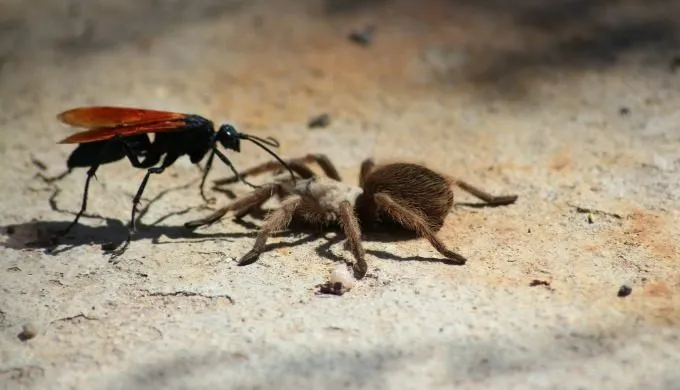
The Cicada Killer’s sting is primarily used to paralyze cicadas, which it then uses as a host for its larvae. While the sting can be painful to humans, it is less severe than the sting of a Tarantula Hawk. The venom of the Cicada Killer is designed to immobilize, not to kill, the cicada, ensuring a fresh food supply for the larva. Stings are infrequent because Cicada Killers are generally not aggressive towards humans. However, if provoked or threatened, they will defend themselves.
Tarantula Hawk Sting
The Tarantula Hawk’s sting is notoriously painful, ranked as one of the most painful insect stings in the world. The sting is used to paralyze tarantulas, allowing the wasp to drag the spider to its nest. The venom is designed to quickly subdue the large and aggressive prey. While the pain is extreme, the sting itself is not usually lethal to humans. The intensity of the sting is a key factor in the Tarantula Hawk’s ability to subdue tarantulas. Pain from the sting is immediate and can last several minutes, but it will eventually subside.
Fact 5 Impact and Control
Understanding the impact of the Cicada Killer and Tarantula Hawk includes their role in the ecosystem and any potential for control. These insects help to shape their environment, and their presence has far-reaching effects.
Cicada Killer Impact
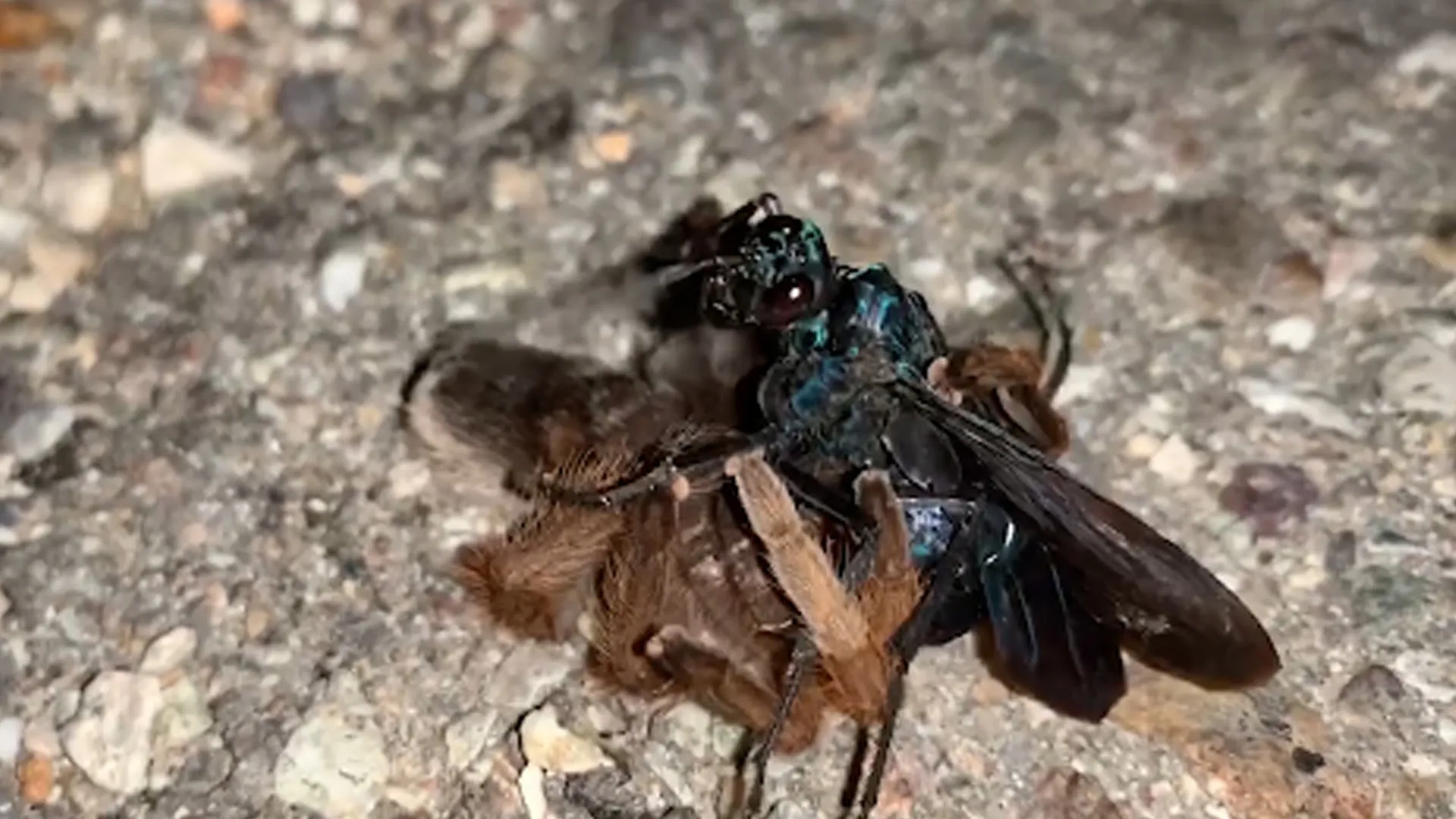
Cicada Killers play a role in controlling cicada populations, which can sometimes become pests in gardens and orchards. Their presence can be beneficial in managing these populations naturally. Their burrowing activity can aerate the soil, which provides some benefits, but excessive burrowing can sometimes lead to issues in lawns. In most cases, the benefits of the Cicada Killer outweigh any potential drawbacks, making them a helpful insect in many environments. Their natural control of cicadas is valuable in ecosystem health.
Tarantula Hawk Impact
Tarantula Hawks have a significant impact on tarantula populations, helping to keep them in check. Their role in controlling spider populations is important in the ecosystems they inhabit. Due to their solitary nature and preference for specific prey, Tarantula Hawks are not typically considered a pest control concern for humans. Their impact is more focused on the natural regulation of the tarantula population, maintaining a balance in their environment.
In conclusion, both the Cicada Killer and the Tarantula Hawk are fascinating examples of specialized wasps that play critical roles in their ecosystems. While they share the same basic predatory lifestyle, their differences in appearance, habitat, behavior, and prey highlight the incredible diversity and adaptation found in the insect world. Understanding these five key facts provides insight into the unique characteristics of each insect, promoting a deeper appreciation for the natural world. From the Cicada Killer’s meticulous cicada hunts to the Tarantula Hawk’s dramatic tarantula takedowns, these wasps offer a glimpse into the complex web of life that surrounds us.
